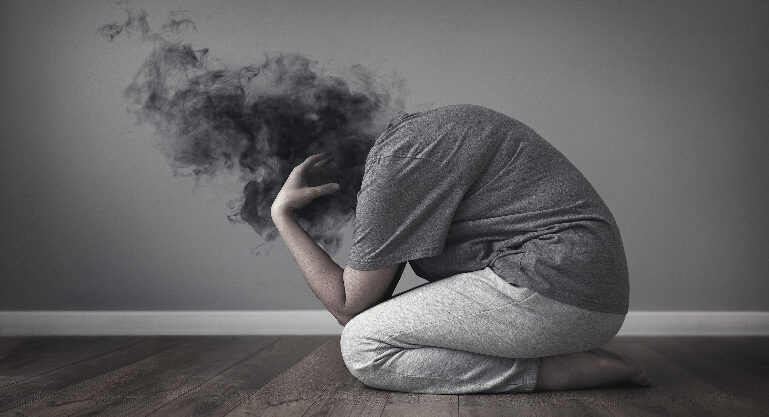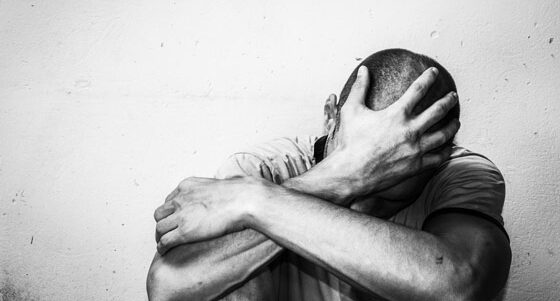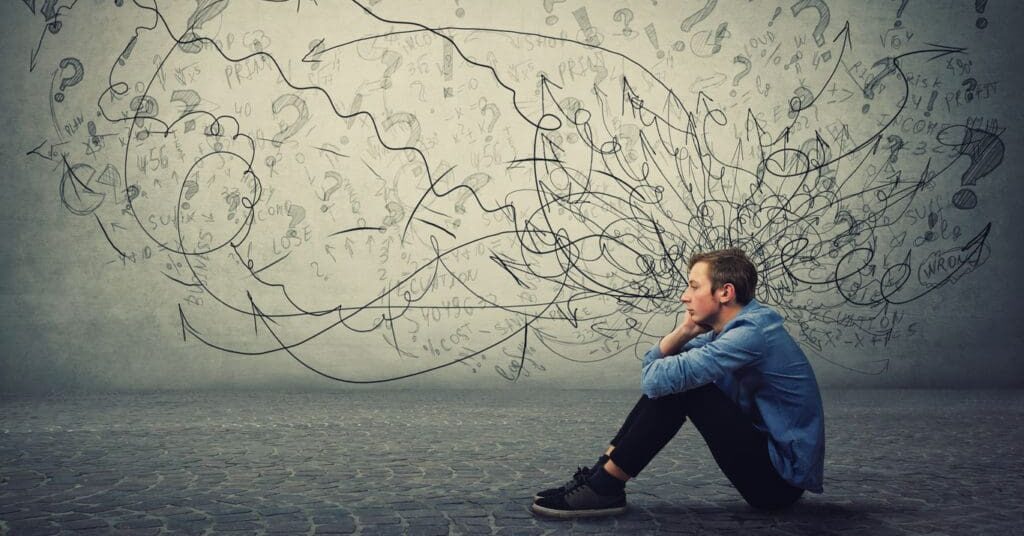Short answer: there isn’t a single “switch” to flip, but depression is highly treatable, and most people get a lot better with the right mix of care. Think “custom treatment plan” rather than “one cure.” For many Americans, that plan blends talk therapy, medication, lifestyle changes, and when needed, brain-stimulation treatments. National Institute of Mental Health
If you’re in crisis or having thoughts of self-harm: Call or text 988 (U.S. Suicide & Crisis Lifeline) or start a chat at 988lifeline.org. It’s free, 24/7. For substance-use + mental health referrals: SAMHSA 1-800-662-HELP (4357). 988 Lifeline
Step 1: Get a real diagnosis (it matters)
Start with a primary-care clinician or mental-health professional. They’ll confirm symptoms, check how long they’ve lasted, and rule out medical look-alikes (e.g., thyroid issues, certain meds). They’ll also screen for related conditions like bipolar disorder or postpartum depression, which changes the treatment approach. source
Step 2: Choose evidence-based therapy
Psychotherapy is a first-line treatment, often as effective as meds for mild to moderate depression, and powerful in combination for moderate to severe cases.
- CBT (Cognitive Behavioral Therapy) helps you break the “thoughts <> feelings <> behavior” loop that keeps depression stuck. Strong evidence backs CBT alone or combined with medication. source
- IPT (Interpersonal Therapy) focuses on life roles, grief, conflict, and support, also well-supported by studies. source
Therapy can be in-person or via telehealth; both are effective. If cost is a barrier, look for community clinics, sliding-scale therapists, college counseling centers, or teletherapy covered by insurance. source
Step 3: Consider medication (especially for moderate–severe)
Antidepressants (like SSRIs/SNRIs, bupropion, mirtazapine) can reduce symptoms and help prevent relapse. Many people do best with meds + therapy. Expect a few weeks to feel benefits; your prescriber may adjust dose/type to balance effect and side-effects, trial-and-error is normal. source
Important: your clinician should screen for bipolar symptoms before starting antidepressants, because treatment differs.
Step 4: Use lifestyle as medicine (it really moves the needle)
These aren’t “nice to haves”, they’re evidence-based:
- Physical activity: Regular movement lowers depression risk and symptoms; even small doses help. Aim for walks, light jogging, strength, or anything you’ll repeat. source
- Sleep: Protect a steady schedule; poor sleep and depression fuel each other.
- Alcohol/drugs: They can worsen mood and sleep. If cutting down is hard, ask your clinician or call SAMHSA’s helpline. source
- Structure & social connection: Gentle routines and time with supportive people counter isolation (a major amplifier of depression).
Step 5: Target specific patterns
- Seasonal depression (SAD): Morning bright-light therapy and/or CBT are effective; ask your clinician which light box and schedule to use. source
- Postpartum/perinatal depression: Tell your OB/GYN or pediatrician, treatments are tailored and safe options exist. source
- Treatment-resistant depression: If meds and therapy haven’t helped enough, brain-stimulation options like rTMS or ECT can be considered under specialist care. source
Step 6: Follow a “stepped-care” timeline (what to expect)
- Weeks 0–2: Start therapy and/or medication; set gentle routines (sleep, walks).
- Weeks 3–6: Reassess: are symptoms moving? If not, adjust (different therapy focus, med change, add exercise plan).
- Weeks 6–12: Aim for response/remission. Keep what works; consider add-ons for residual symptoms (sleep work, social rhythm therapy, light therapy if seasonal).
- Months 3–12: Continue effective treatment to prevent relapse; taper meds only with prescriber guidance. source
Step 7: Safety plan (non-negotiable)
Depression can distort thinking. Make a written plan: who you’ll call, early warning signs, crisis numbers (988, local ER/911 for imminent danger), and steps that help you ride out spikes (text a friend, short walk, breathe, postpone big decisions). 988 Lifeline
Myths to drop right now
- “I should tough it out.” Depression is not a willpower issue; it’s medical and treatable. source
- “If the first treatment doesn’t work, nothing will.” Most people need some adjustments before they find the right fit, and then improve. source
There’s no single “cure,” but there is a path to feeling like yourself again. Start with a proper diagnosis, pick evidence-based therapy, consider medication when appropriate, move your body, protect sleep, and tailor add-ons (like light therapy for SAD). If standard steps fall short, ask about rTMS/ECT. And if you’re ever in crisis, reach out to 988 immediately.
Ayurveda on Healing Depression
Ayurveda doesn’t look at depression as a “disease” to simply cure, it sees it as a deep imbalance in the mind-body system. The goal is not just to reduce symptoms but to restore balance of the doshas, strengthen digestion (Agni), rebuild vitality (Ojas), and elevate the mind’s clarity (Sattva).
1. The Dosha Connection in Depression
- Vata imbalance (air + space):
- Creates anxiety, emptiness, racing thoughts, insomnia.
- Depression feels restless, nervous, and “scattered.”
- Creates anxiety, emptiness, racing thoughts, insomnia.
- Pitta imbalance (fire + water):
- Leads to irritability, anger, self-criticism, and burnout.
- Depression feels like rage turned inward.
- Leads to irritability, anger, self-criticism, and burnout.
- Kapha imbalance (earth + water):
- Produces heaviness, lethargy, withdrawal, oversleeping.
- Depression feels like sinking into emotional fog.
- Produces heaviness, lethargy, withdrawal, oversleeping.
Ayurveda asks: Which dosha is driving the imbalance? because the approach differs for each.
2. Healing Pillars in Ayurveda
a. Dinacharya (Daily Routine)
- Wake up before sunrise (Brahma Muhurta) to uplift mood.
- Eat meals at the same time daily, stable rhythms calm the nervous system.
- Early bedtime (10 PM) to reduce Vata restlessness and restore sleep cycles.
b. Diet for Depression
- For Vata depression: Warm, grounding meals (soups, stews, ghee, root veggies).
- For Pitta depression: Cooling foods (leafy greens, melons, cucumbers, coconut water).
- For Kapha depression: Light, energizing meals (ginger tea, legumes, steamed veggies, spices like turmeric and black pepper).
- Avoid processed, heavy, or irregular meals, they worsen imbalance.
c. Herbal Support (Rasayanas)
- Ashwagandha: Calms Vata, reduces stress hormones, builds resilience.
- Brahmi (Bacopa monnieri): Improves memory, clarity, and calms anxiety.
- Shankhpushpi: Balances mood and sharpens focus.
- Jatamansi: Deeply calming, helps with sleep.
(Always consult an Ayurvedic practitioner before starting herbs.)
d. Abhyanga (Self-Oil Massage)
- Daily warm sesame or coconut oil massage grounds Vata, nourishes the nervous system, and builds Ojas (vital energy).
e. Yoga and Pranayama
- Vata depression: Gentle, grounding poses (child’s pose, forward bends) + alternate nostril breathing.
- Pitta depression: Cooling poses (moon salutations, twists) + shitali pranayama (cooling breath).
- Kapha depression: Energizing flows (sun salutations, backbends) + vigorous breathwork (kapalabhati).
f. Meditation and Sattva Practices
- Chanting mantras (e.g., Om Shanti).
- Spending time in nature to absorb calmness.
- Practicing gratitude journaling to uplift Sattva (clarity, lightness).
3. The Ayurvedic Insight on Depression
- Modern medicine says: “Depression is an illness of brain chemistry.”
- Ayurveda says: “Depression is the loss of balance in doshas, weakened Agni, depleted Ojas, and a mind dominated by Rajas (restlessness) or Tamas (dullness).”
Both perspectives align in one truth: depression can be healed. Where modern care treats with therapy/meds, Ayurveda strengthens the roots of resilience: routine, digestion, energy, and clarity.
In Short:
Ayurveda doesn’t replace medical care for depression, it complements it. By calming Vata, cooling Pitta, and energizing Kapha, restoring Agni, and nourishing Ojas, Ayurveda provides daily tools that gently lift the fog, settle the restlessness, and restore a steady, resilient mind.



